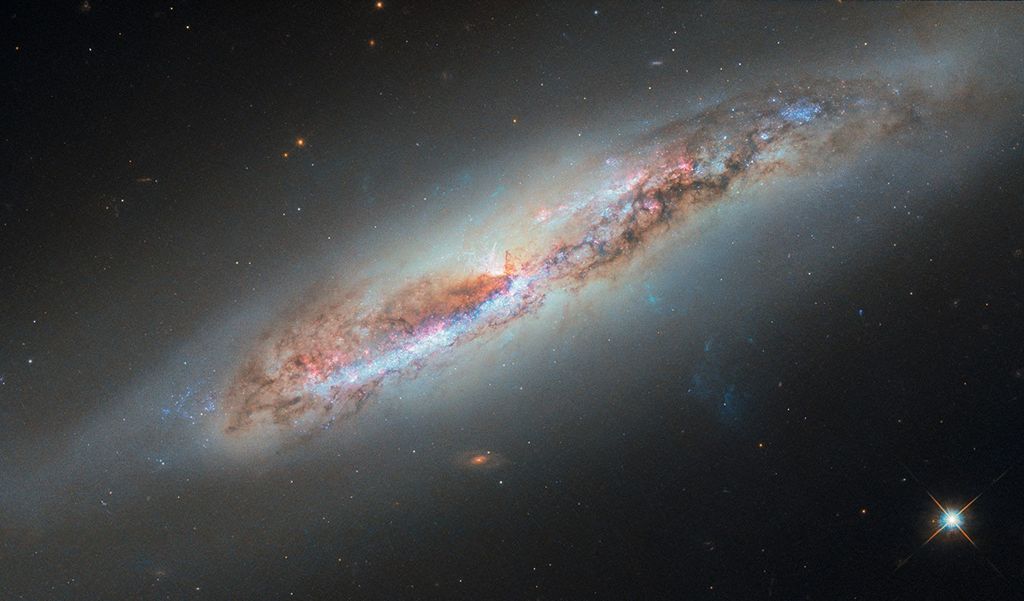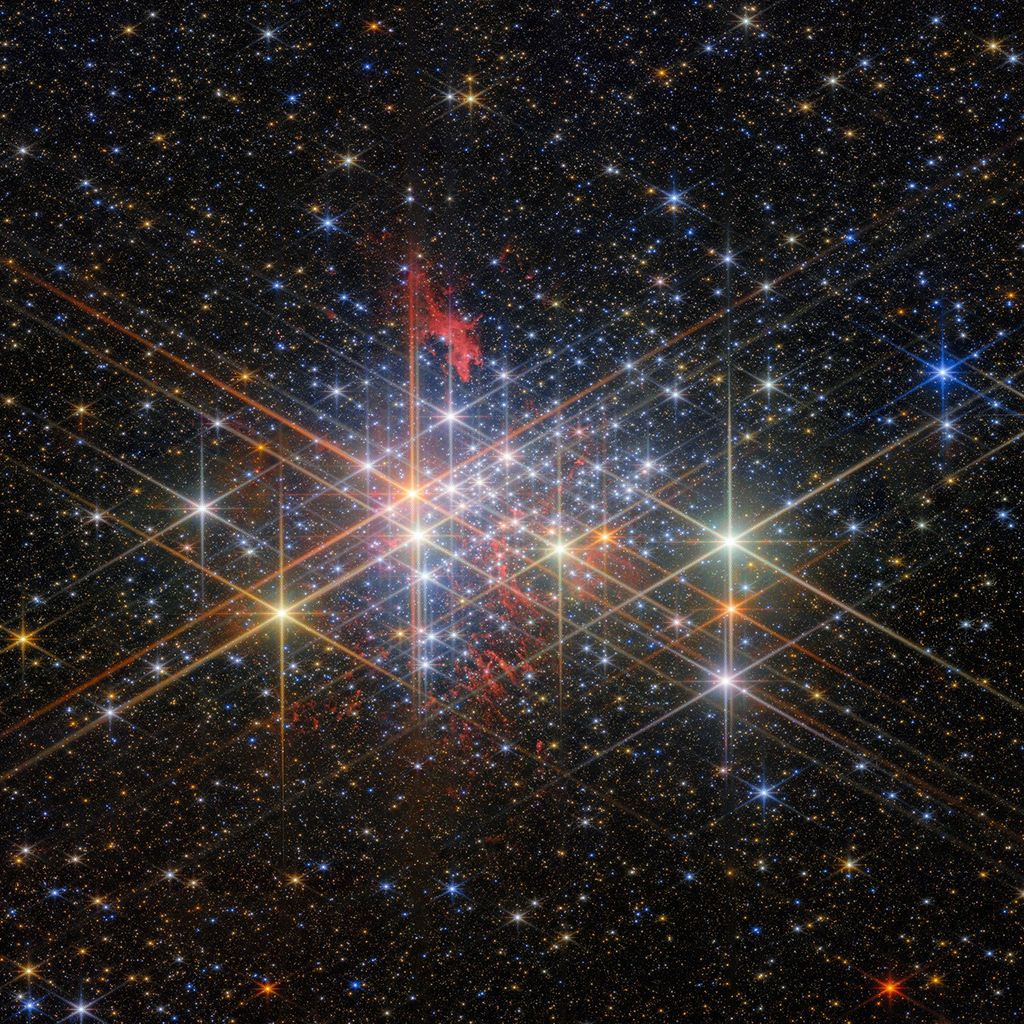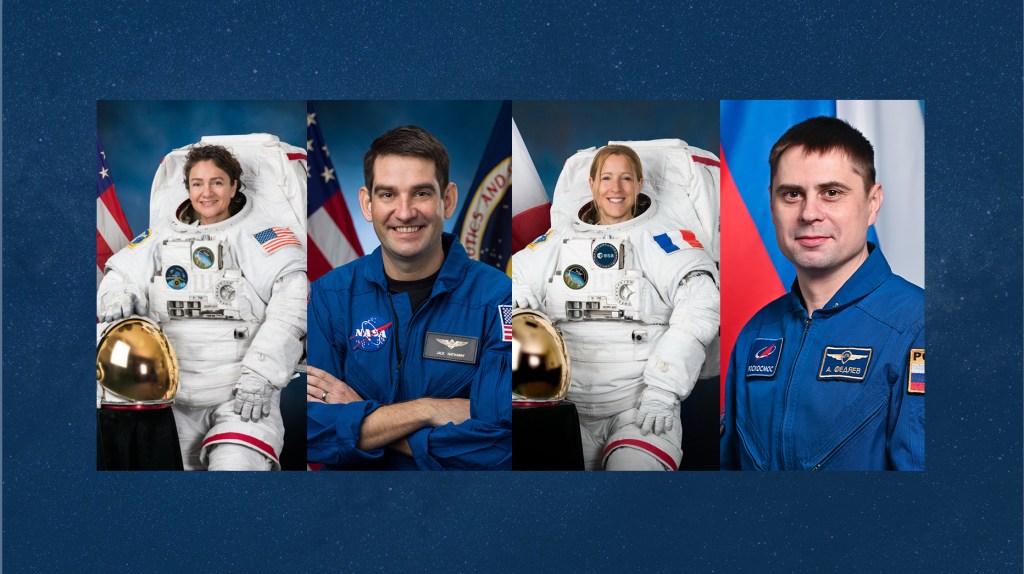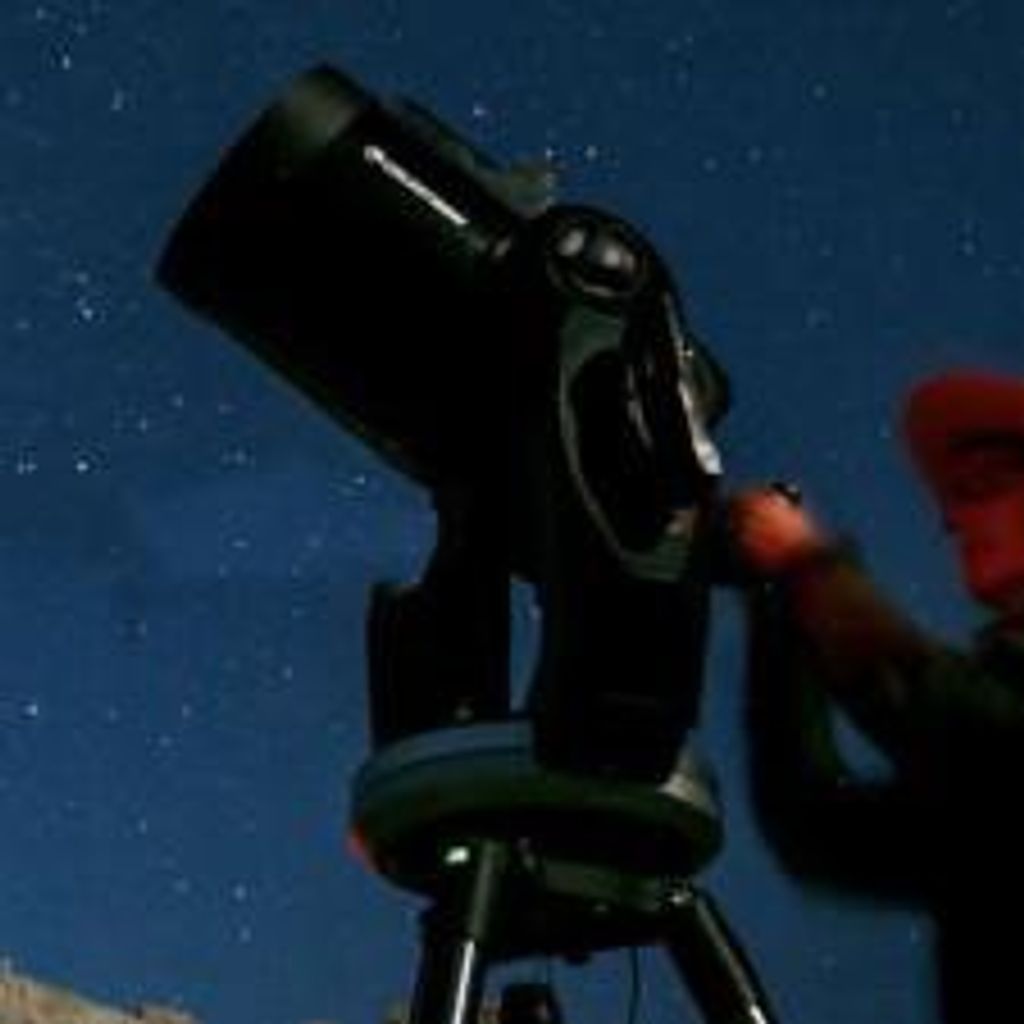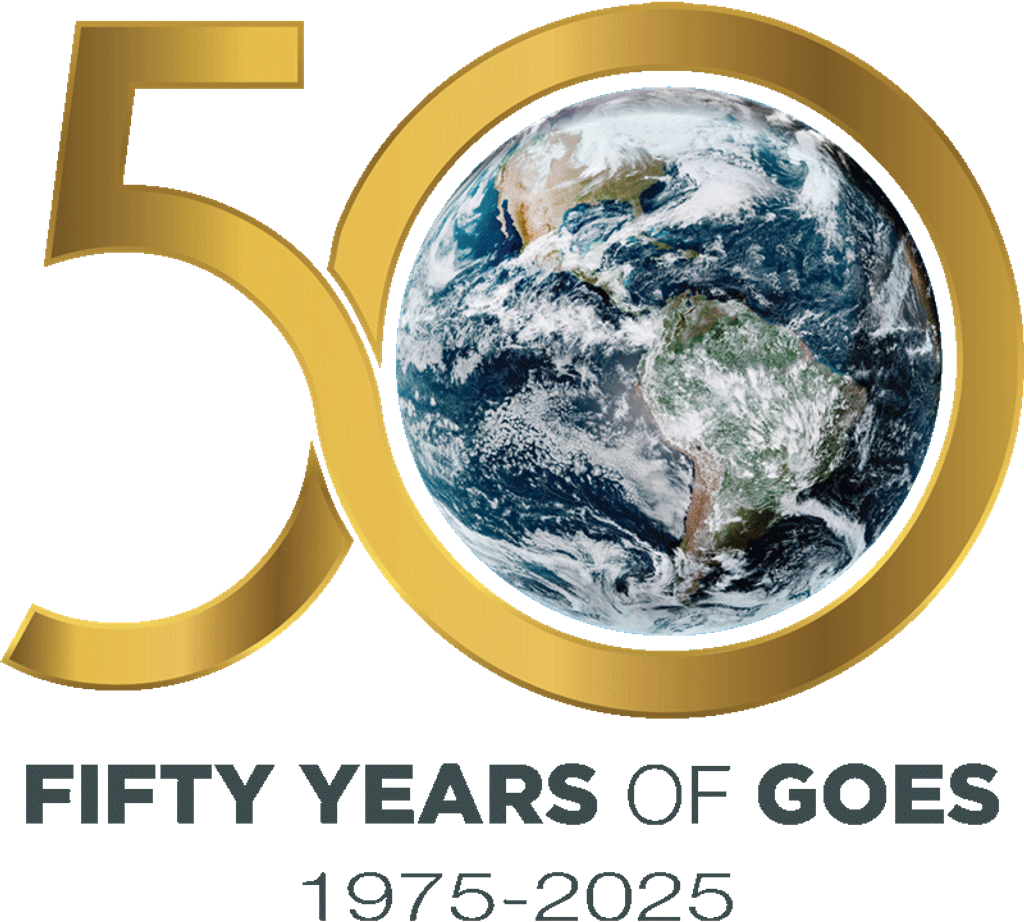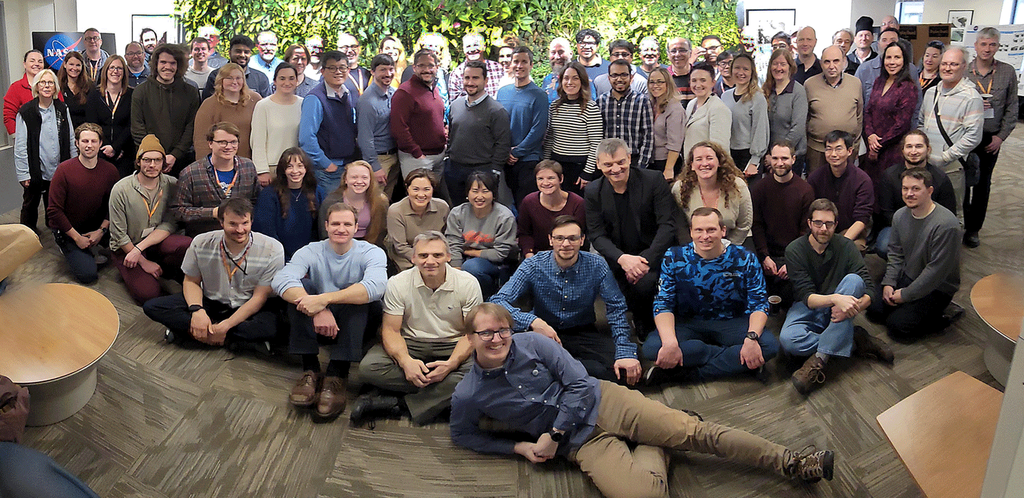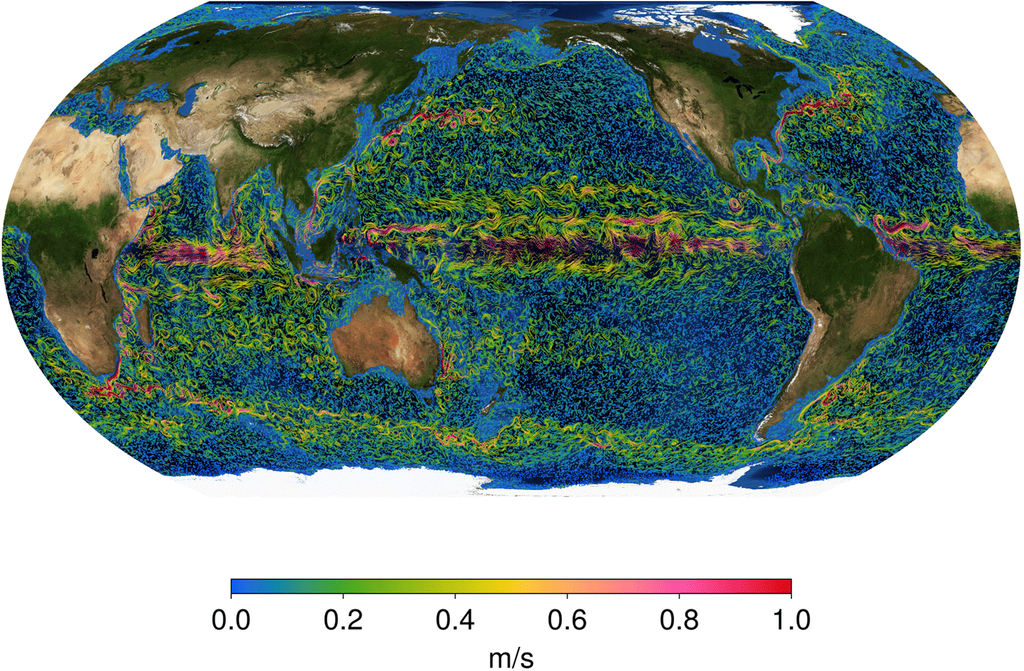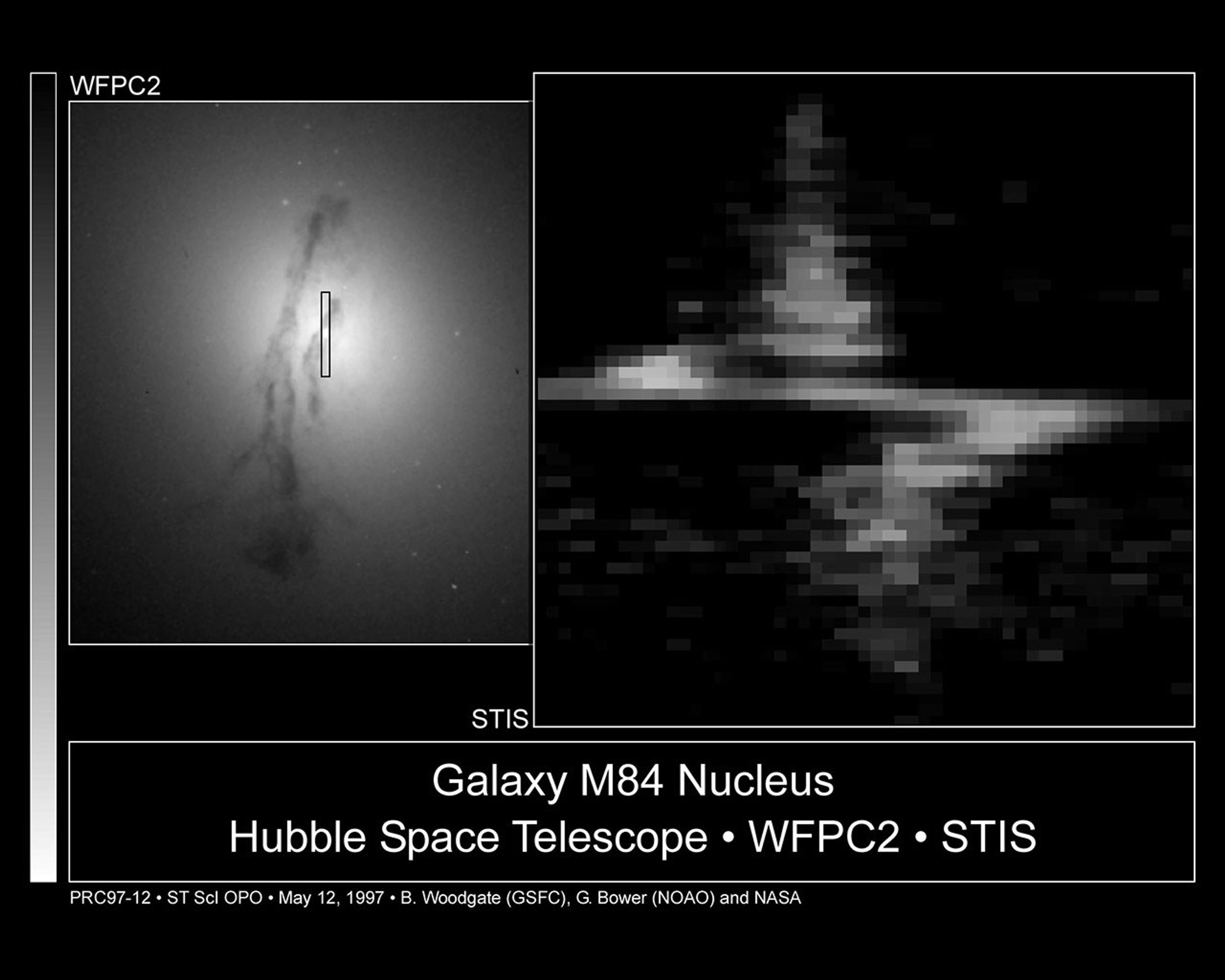BACKGROUND INFORMATION: STIS UNCOVERS THE BLACK HOLE POWERING AN ACTIVE GALACTIC NUCLEUS
Exploiting the unique capabilities of Hubble's Space Telescope Imaging Spectrograph (STIS), in a single exposure astronomers were able to discover a black hole in the center of galaxy M84 by mapping the motions of gas in the grip of the black hole's powerful gravitational pull.
Evidence for the black hole comes from measurement of extremely rapid rotation of a disk of gas at the very center of the galaxy. STIS recorded a sharp rise in the velocity of material as it looked close into a disk of gas whirling around the black hole. STIS measured velocities skyrocketing to 880,000 miles per hour (400 kilometers per second) within 26 light-years of the galaxy's center, where the black hole dwells. If no black hole were present, the velocity would not have risen so steeply in the STIS observations. This motion allowed astronomers to calculate that the black hole contains at least 300 million solar masses.
It also shows that STIS is ideally suited for efficiently conducting a survey of galaxies to determine the distribution of the black holes and their masses. Astronomers believe they are on the trail of finding the black holes thought to power the quasars – extremely bright cores of galaxies – which were abundant in the early universe.
Astronomers have long suspected M84 contained a black hole because of strong circumstantial evidence. The nucleus of the galaxy is active, powerfully radiating light and ejecting beams of particles that emit at radio wavelengths. This discovery makes a clear connection between the dynamical motions of the central compact disk of gas and the powerful activity in the nucleus.
M84 is located in the Virgo Cluster of galaxies, 50 million light-years from Earth, and a nearby neighbor to the more massive galaxy M87, in which the Hubble found an extremely massive black hole in 1994. The comparison of the two observations shows the power of the new STIS instrument. The previous spectrograph could sample only one spot on a galaxy at a time. STIS provides velocity samples from a continuous strip along the galaxy, by using a slit at its focal plane, rather than a single aperture, as in the earlier instruments.
Each point on the solid-state CCD (Charge Coupled Device) detector samples a square patch at the galaxy that is 12 light-years on a side. The detection of black holes at the centers of galaxies is about 40 times faster than the earlier Faint Object Spectrograph.
STIS was configured to record five spectral features in red light from glowing hydrogen atoms as well as nitrogen and sulfur ions in orbit around the center of M84. At each sampled patch the velocity of the entrapped gas was measured. Because the patches are contiguous, the astronomers could map the change of velocity in detail.
Because most of the mass at the galaxy's core is entrapped in the black hole, the surrounding disk of gas differentially rotates, just as the planets orbit our Sun at different speeds depending on their distances. Just as the mass of the Sun can be calculated using the laws of Newton and Kepler, the rotation speed of gas around the black hole can be used to measure its mass.

